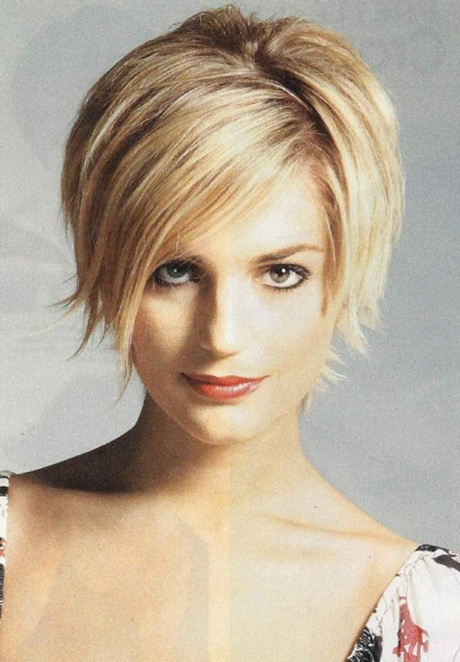 new modern short hairstyles for women 2013 short haircuts are not newhttp://i2.wp.com/short-haircutstyles.com/wp-content/uploads/2013/05/New-Modern-Short-Hairstyles-For-Women-2013.jpg?resize=530%2C706
new modern short hairstyles for women 2013 short haircuts are not newhttp://i2.wp.com/short-haircutstyles.com/wp-content/uploads/2013/05/New-Modern-Short-Hairstyles-For-Women-2013.jpg?resize=530%2C706
Modern Short Hairstyles For Women
A hair, hairdo, or haircut identifies the styling of locks, usually on the human head. Sometimes, this may also mean an editing of beard hair. The fashioning of hair can be considered an aspect of personal grooming, fashion, and cosmetics, although practical, cultural, and popular factors affect some hairstyles also. The oldest known depiction of hair braiding dates back about 30,000 years. In early civilizations, women's locks was often elaborately and carefully dressed in special ways. In Imperial Rome, women used their hair in complicated styles. From enough time of the Roman Empire[citation needed] until the Middle Ages, nearly all women grew their head of hair as long as it would increase obviously. During the Roman Empire as well as in the 16th century in the western world, women commenced to wear their hair in extremely ornate styles. Within the later half of the 15th century and on into the 16th century an extremely high hairline on the forehead was considered attractive. During the 16th and 15th ages, Western men wore their scalp cropped no longer than shoulder-length. In the early 17th century male hairstyles grew longer, with waves or curls being considered desirable.
The male wig was pioneered by King Louis XIII of France (1601-1643) in 1624. Perukes or periwigs for men were presented into the English-speaking world with other French styles in 1660. Late 17th-century wigs were lengthy and wavy, but became shorter in the mid-18th century, where time these were normally white. Short hair for fashionable men was a product of the Neoclassical movement. In the early 19th hundred years the male beard, and moustaches and sideburns also, made a solid reappearance. In the 16th to the 19th century, European women's hair became more obvious while their wild hair coverings grew smaller. In the center of the 18th hundred years the pouf style developed. During the First World War, women around the world started to shift to shorter hairstyles that were simpler to manage. In the early 1950s women's hair was generally curled and worn in a number of styles and lengths. In the 1960s, a lot of women started to wear their hair in a nutshell modern cuts like the pixie cut, while in the 1970s, mane tended to looser be longer and. In both the 1960s and 1970s many men and women wore their hair very long and straight. Inside the 1980s, women pulled back their hair with scrunchies. During the 1980s, punk hair styles were used by some individuals.
Throughout times, folks have worn their wild hair in a multitude of styles, largely determined by the fashions of the culture they live in. Hairstyles are markers and signifiers of social class, age, marital status, racial identification, political beliefs, and attitudes about gender.
In many ethnicities, for religious reasons often, women's hair is covered while in public areas, and in a few, such as Haredi Judaism or Western Orthodox neighborhoods, women's locks is shaved or trim very short, and covered with wigs.Only because the end of World War I've women started to wear their hair brief and in rather natural styles.
Paleolithic
- The oldest known reproduction of mane braiding lies back again about 30,000 years: the Venus of Willendorf, now known in academia as the Woman of Willendorf, of a female figurine from the Paleolithic, approximated to possess been made between about 28,000 and 25,000 BCE.The Venus of Brassempouy matters about 25,000 years old and indisputably shows hairstyling.
Bronze Age
- In Bronze Time razors were known and used by some men, however, not on a daily basis since the procedure was rather annoying and required resharpening of the tool which reduced its strength.
Ancient history
- In early civilizations, women's mane was often elaborately and carefully dressed in special ways. Women coloured their wild hair, curled it, and pinned it up (ponytail) in many ways. They set their mane in curls and waves using damp clay, that they dried in the sun and then combed out, if not by utilizing a jelly made of quince seeds soaked in drinking water, or styling tongs and curling irons of varied kinds.
Roman Empire and Middle Ages
- Between 27 BC and 102 Advertising, in Imperial Rome, women used their head of hair in complicated styles: a mass of curls on top, or in rows of waves, attracted back into braids or ringlets. Eventually noblewomen's hairstyles grew so complex that they required daily attention from several slaves and a stylist to become maintained. The locks was lightened using real wood ash, unslaked lime and sodium bicarbonate, or darkened with copper filings, oak-apples or leeches marinated in wines and vinegar. It had been augmented by wigs, hairpieces and pads, and held in place by nets, pins, combs and pomade. Beneath the Byzantine Empire, noblewomen covered almost all of their hair with silk caps and pearl nets.
Best Hair Styles For Short Hair Women
- It is very important to choose the best short hair styles for females since it takes on a huge part of your look. Having the right hairstyle can offer you with delight and positive feelings. Find out which hairstyle is ideal for your personality and character. You should also consult your hairstylist before having a new haircut. After all, changes are great and it can also add positive outlook in your daily life. Feel free to browse our collection of short hairstyles for females and choose the one that your like best.
18 Modern Short Hair Styles for Women PoPular Haircuts
 http://pophaircuts.com/images/2015/03/Elegant-and-Mature-Short-Hairstyles-for-Older-Women.jpg
http://pophaircuts.com/images/2015/03/Elegant-and-Mature-Short-Hairstyles-for-Older-Women.jpgmodern short hairstyles short hairstyles for women modern short hair
 http://www.shaircuts.net/wp-content/gallery/modern-short-haircuts/modern-short-haircuts-1.jpg
http://www.shaircuts.net/wp-content/gallery/modern-short-haircuts/modern-short-haircuts-1.jpgmodernhaircutforwomenwithfeminineprofile
 http://content.latest-hairstyles.com/wp-content/uploads/Modern-Haircut-for-Women-with-Feminine-Profile-500x333.jpg
http://content.latest-hairstyles.com/wp-content/uploads/Modern-Haircut-for-Women-with-Feminine-Profile-500x333.jpgnew modern short hairstyles for women 2013 short hairstyles 2014
 http://gvenny.com/images/short-modern-hairstyles-for-women/short-modern-hairstyles-for-women-01.jpg
http://gvenny.com/images/short-modern-hairstyles-for-women/short-modern-hairstyles-for-women-01.jpgOIP.Mac03ff44e3f88d50d53c6b6a713c26feo1
179F8E166ECBA7EFCE5DEEF2EA669DFB8532CD390Chttp://generalhaircut.blogspot.com/2013/05/modern-short-hairstyles-for-women-2013.html
Embed Our image to your website
ThumbnailImageEmbed Our image to a Forum
ThumbnailImage








.jpg)
.jpg)

